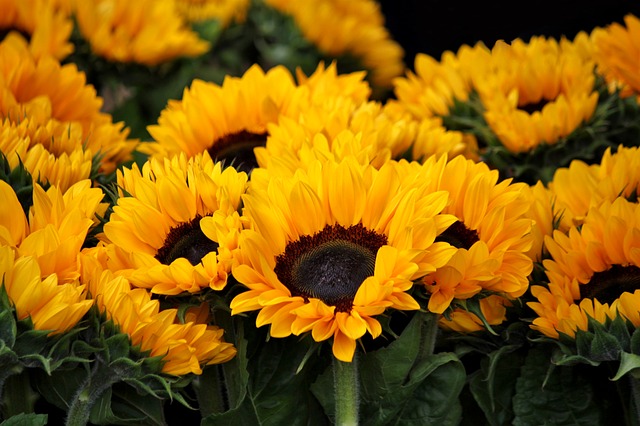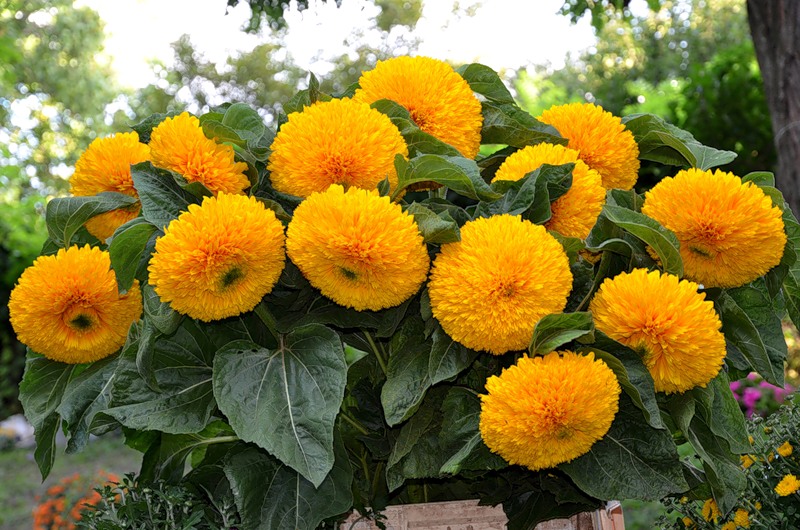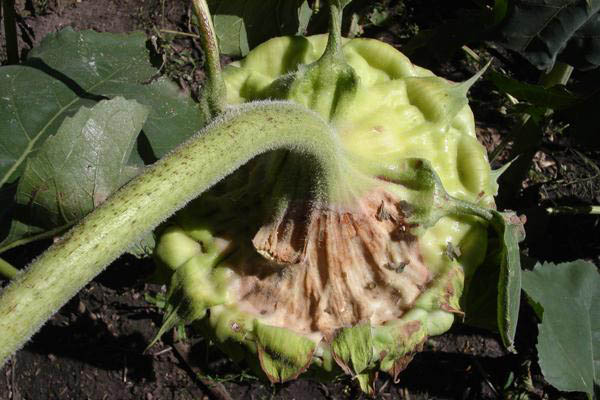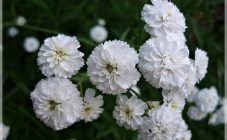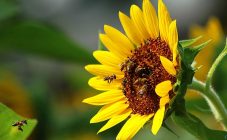Decorative sunflower has long been an integral part of most flower beds. This plant is also called helianthus. Cultivars are very diverse in height and color. There are sunflowers up to several meters in height, and there are dwarf ones. The colors are traditionally yellow, but there are, for example, dark red varieties.
Features of agricultural technology
Ornamental sunflowers are flowers that prefer sunny locations. This culture needs fertile soil with an abundance of nutrients. The soil needs to be well drained. Acidic soils are not suitable for this culture. The area where the plant will be planted must be protected from the wind.
The culture has the ability to take in large quantities of nutrients from the soil; next year it is recommended to plant beans or beans, the so-called green manure.
Numerous varieties of this culture are widely used in landscape design. Borders are created from the plant, planted in group plantings, dwarf varieties are placed in rock gardens, hedges are created from high varieties, the height of which may be higher than the height of a person.
Reproduction of culture
Perennial species of helianthus reproduce by cuttings. You need to cut a decorative sunflower in spring or autumn. Perennial varieties are also propagated by dividing the bush - this rejuvenates the plant and increases the splendor of flowering. "Divide" the sunflower three years after planting.
In the climatic conditions of Central Russia, sunflower is often grown as an annual plant. The most common way to breed sunflowers is by sowing seeds. There are a lot of varieties for breeding this plant. The most popular: sunflower Bear cub, domestic variety Krasno Solnyshko (red sunflower).
Growing a bear cub from sunflower seeds begins with soaking the planting material. Soak a cloth with a solution of wood ash (1 liter of warm water and 2 tablespoons of ash) and wrap the seeds in it.
Dig holes 6 cm deep, pour a few seeds into them. The distance between plantings should be up to 0.5 m, for large varieties about 0.7 m. The distance between the rows of crops should be up to 0.8 m. The first shoots will appear in 10 days. To get a constantly blooming flower bed, seeds must be sown at weekly intervals.
The ideal time for planting outdoors is early May. Gardeners also practice earlier sowing - April. The temperature should be stable at around +10 C °, then the seedlings will appear. It will take about 80 days between sowing the seeds and the appearance of the first flowers.
The sunflower is also bred by the seedling method. To do this, 2-3 seeds are planted in small pots. This must be done a month before the florist decides to plant them in open ground. Seedlings should be placed on a well-lit window, watered periodically, but not excessively.
Small sunflowers are planted in open ground at an established temperature of +12 ° C.
Many amateurs practice growing decorative sunflowers at home; dwarf varieties are suitable for these purposes. The pot should be chosen based on the variety; for low varieties, a container with a diameter of about 40 cm will suffice. Before planting, the container needs disinfection to avoid diseases of future plants.
At the bottom of the pot, drainage must be done; pebbles or foam are suitable for this. Pour special soil on top of the drainage layer, without adding about 2 cm to the edge. Seedlings will appear in a week, after which the containers are placed on the window. Even at home, you can grow a sunflower Bear cub.
Culture care
It is necessary to water the culture often and abundantly, because the plant has large roots, the frequency of watering is once a week, increase in drought. Watering should be regular during the period when leaves and buds are formed, as well as during flowering.
Dried flowers need to be removed to stimulate the appearance of new flowers.
On fertile soil, the helianthus does not require fertilization. For poor soil, it is worth stocking up on superphosphate in granules, which need to be fed to a young plant during the formation of 5 leaves. Infusion of mullein in a ratio of 1:10 must be added during the budding period. Potassium sulfate is also added at this time.
Every week you need to get rid of weeds in the flower bed and loosen the soil around the sunflower, and inspect the plant for diseases or pests. A sunflower may not bloom if the plant is attacked by parasites.
The most common diseases:
- rust: orange bubbles on the stem of the plant;
- downy mildew: on the inside of the sheet - white bloom, on the outside - dark spots;
- brown spot: round spots, then dry out.
These diseases appear as a result of improper care, and high humidity and soil cause fungal infections. It is possible to cope with these diseases by treating the culture with fungicides, as well as by removing the affected areas of the plant.
To combat the fungus, you can use the folk method: copper sulfate (3 g), laundry soap (25 g), water (1 l). Within a week, the plant is treated with this solution until the symptoms of the disease disappear.
Pests that often attack the plant:
- aphid;
- meadow moths;
- weevils;
- wireworms.
Wintering plants
Perennial varieties must be cut off after repeated frosts so that about 7 cm remains above the ground. Treat the plant and soil with any fungicide to prevent the appearance of fungus. Cover the plant so it doesn't freeze.
The sunflower got its name because its head looks like the sun and follows it all day. When caring for this decorative flower, you need to be careful and inspect it regularly to prevent disease or the appearance of pests. It will be much easier to care for the crop if you familiarize yourself with the features of planting and caring for it in advance.
